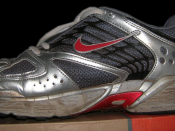NIKE, INC: COST OF CAPITAL
NorthPoint Group, a mutual management firm is weighting whether to buy Nike's stock or not. The firm has experienced sales growth, profits and market share decline. Nike is now committing to cut down expenses while increasing growth and operating performance.
Kimi Ford has asked her assistant, Joanna Cohen, to estimate Nike's cost of capital. The cost of capital depends on the mode of financing used. In this case, the business is financed through equity and debt.
To value the cash flows of the entire firm, I will be using single cost. Therefore, I will be estimating the weighted average cost of capital (WACC) based on the book values, and also, the market values presented in the case.
Methodology for calculating cost of capital: WACC (based on book values)
Debt
First of all, I calculated the proportion of the debt and equity based on the available balance sheet.
Nike's accounting based book values capital structure has a 27.06% of debt and a 72.94% of equity.
Cost of Debt
The best way to calculate cost of debt is to use yield to maturity method, which the data provided in exhibit 4. Nike can borrow at an interest rate of 7.13% and its marginal federal-plus-state tax rate is 38%. It's after tax cost of debt will be 4.42%.
Cost of Equity
To calculate cost of equity I will be using the capital asset pricing model (CAPM), the dividend yield plus growth rate the new common stock method.
The rate of return that investors require on the firm's common stock by using CAPM would be 9.81%; with the dividend yield plus growth rate would be 6.79%; and by applying the new stock model the rate of return would be 6.00%.
Capital Cost
The WACC using these...


